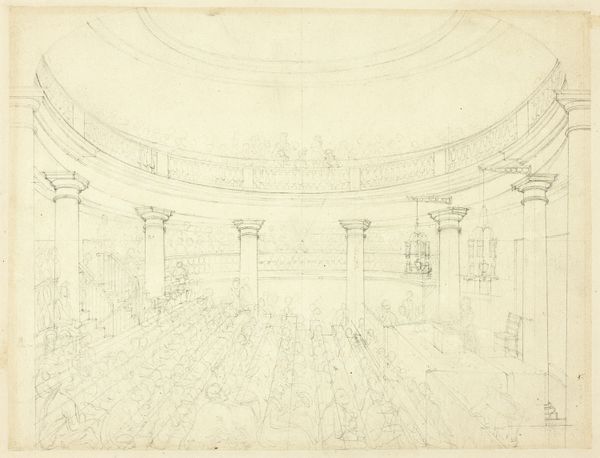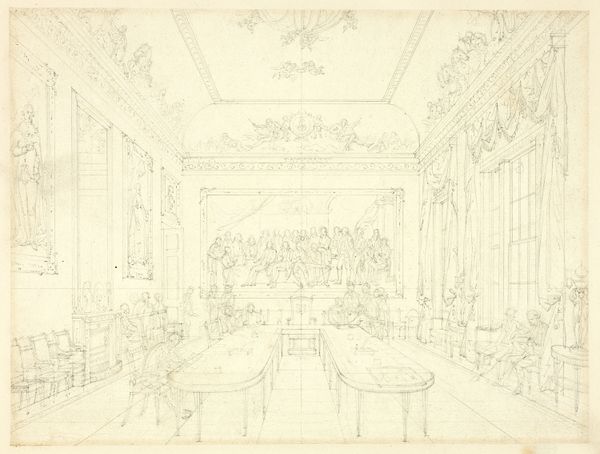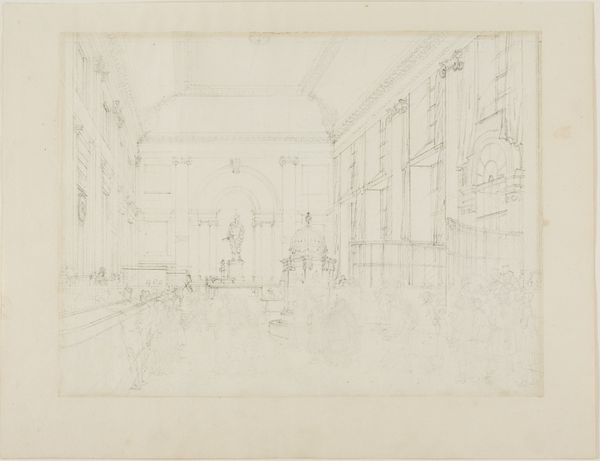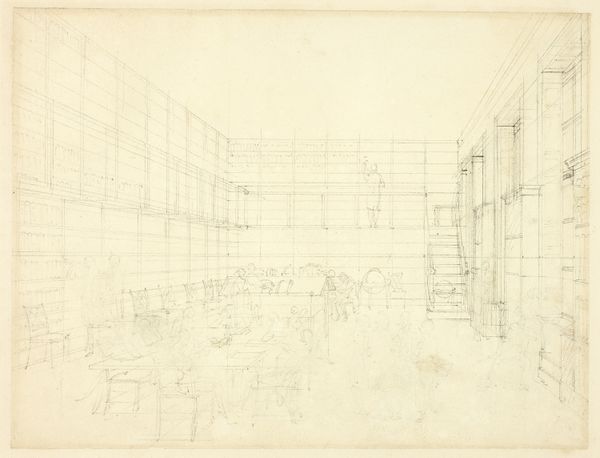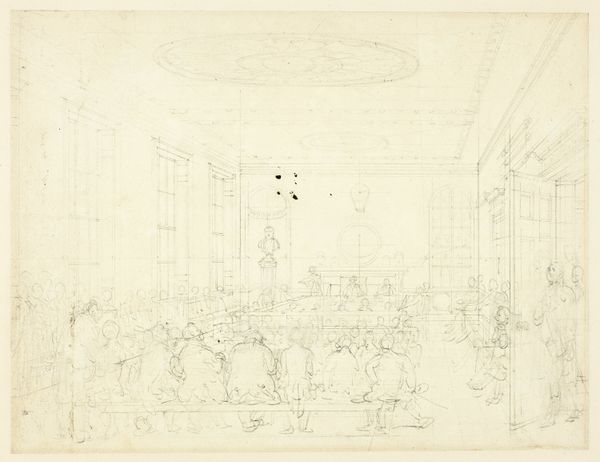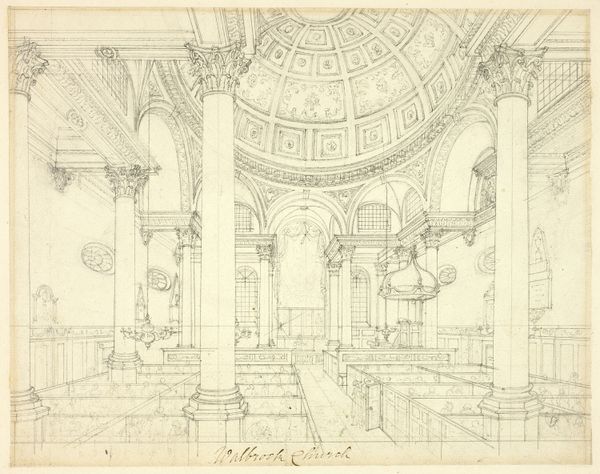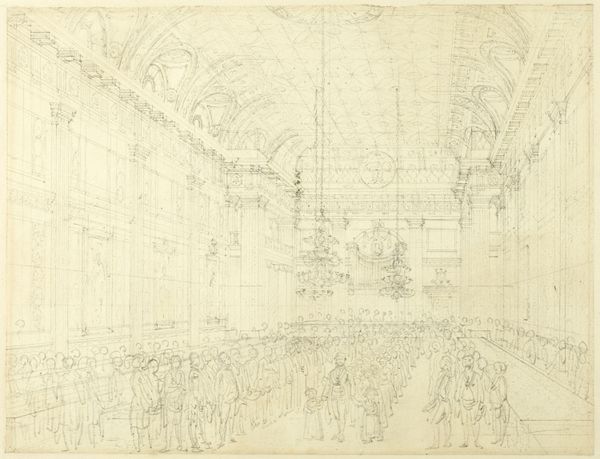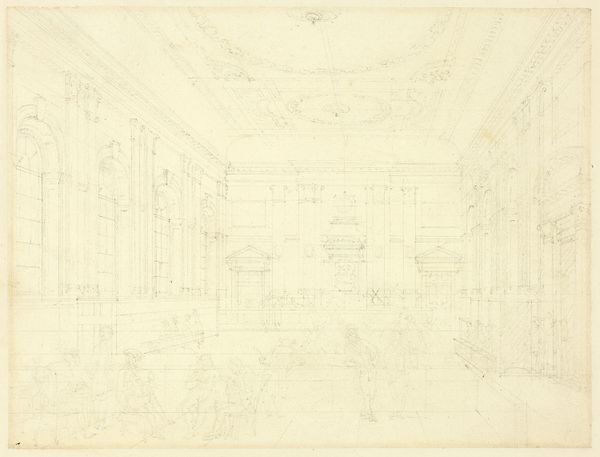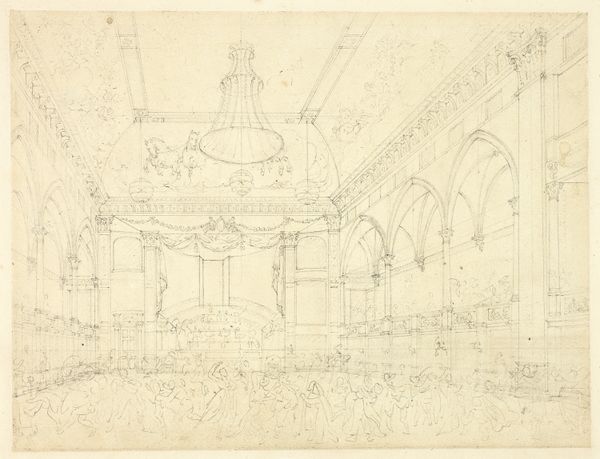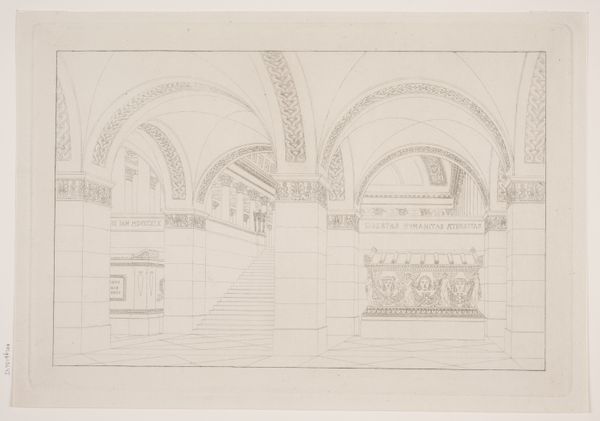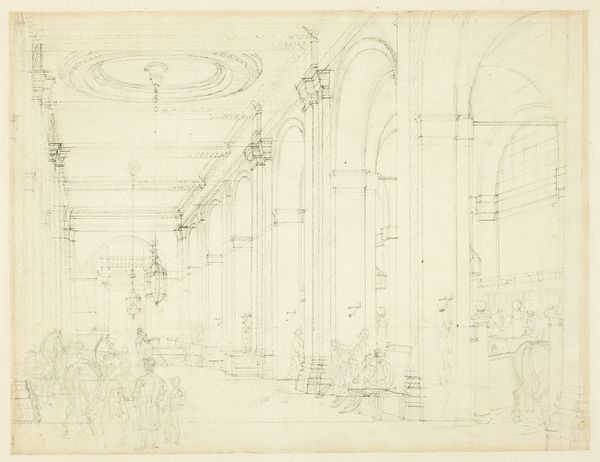
Study for Chelsea Hospital, from Microcosm of London c. 1810
0:00
0:00
drawing, print, paper, graphite, architecture
#
architectural sketch
#
drawing
# print
#
etching
#
perspective
#
paper
#
personal sketchbook
#
geometric
#
england
#
architectural drawing
#
line
#
graphite
#
architecture drawing
#
architecture
Dimensions: 198 × 261 mm
Copyright: Public Domain
Art Historian: We’re looking at "Study for Chelsea Hospital, from Microcosm of London," a print and graphite drawing dating back to around 1810. The hand behind this piece is that of Augustus Charles Pugin, rendered on paper. Curator: My first impression is of enforced order. The rigid lines of perspective, the rows of seated figures...it all feels very controlled. Art Historian: Indeed. Notice how Pugin uses precise lines to depict this grand interior. The architectural detailing, from the tall windows to the frieze at the far end, conveys a sense of established authority. And that ceiling medallion—a subtle suggestion of a higher power looking down. Curator: That “established authority” comes at a price. Chelsea Hospital was founded as a home for retired soldiers. These aren't just any people seated there; they are veterans, likely injured or traumatized, now subjected to another form of institutionalization. Is the art here glorifying an enforced system, a sort of "thank you for your service" pat on the back? Art Historian: It's true that institutions can be restrictive, but in Pugin's time, institutions like Chelsea Hospital also represented societal progress. A visual commitment to caring for those who served the nation. Think of it less as mere glorification, and more a complex reflection on duty and gratitude. Notice that the very long tables and windows repeat themselves to underscore the immensity of service within society. Curator: Perhaps, but the lack of individuality is what strikes me. Each figure is a mere stroke, undifferentiated. The individual sacrifices of these veterans are visually lost in this imposing structure and geometric harmony. How much room is truly given for people when we look only at monumental buildings? Art Historian: I concede the figures are generalized. But the emphasis on perspective, drawing the eye toward the back, to the mural of honor may symbolically elevates their status within the space. I find meaning in it showing that, whether named or not, those present had served, fought and defended a nation. Curator: An interesting point about seeing their honor enshrined in a single mural. It invites a lot of different questions around service. Art Historian: Absolutely. This has offered fresh angles on a fascinating study about duty and sacrifice—as seen through symbolic imagery. Curator: Yes, it is difficult to ignore those tensions after this dive into an artwork born from a complicated chapter.
Comments
No comments
Be the first to comment and join the conversation on the ultimate creative platform.
